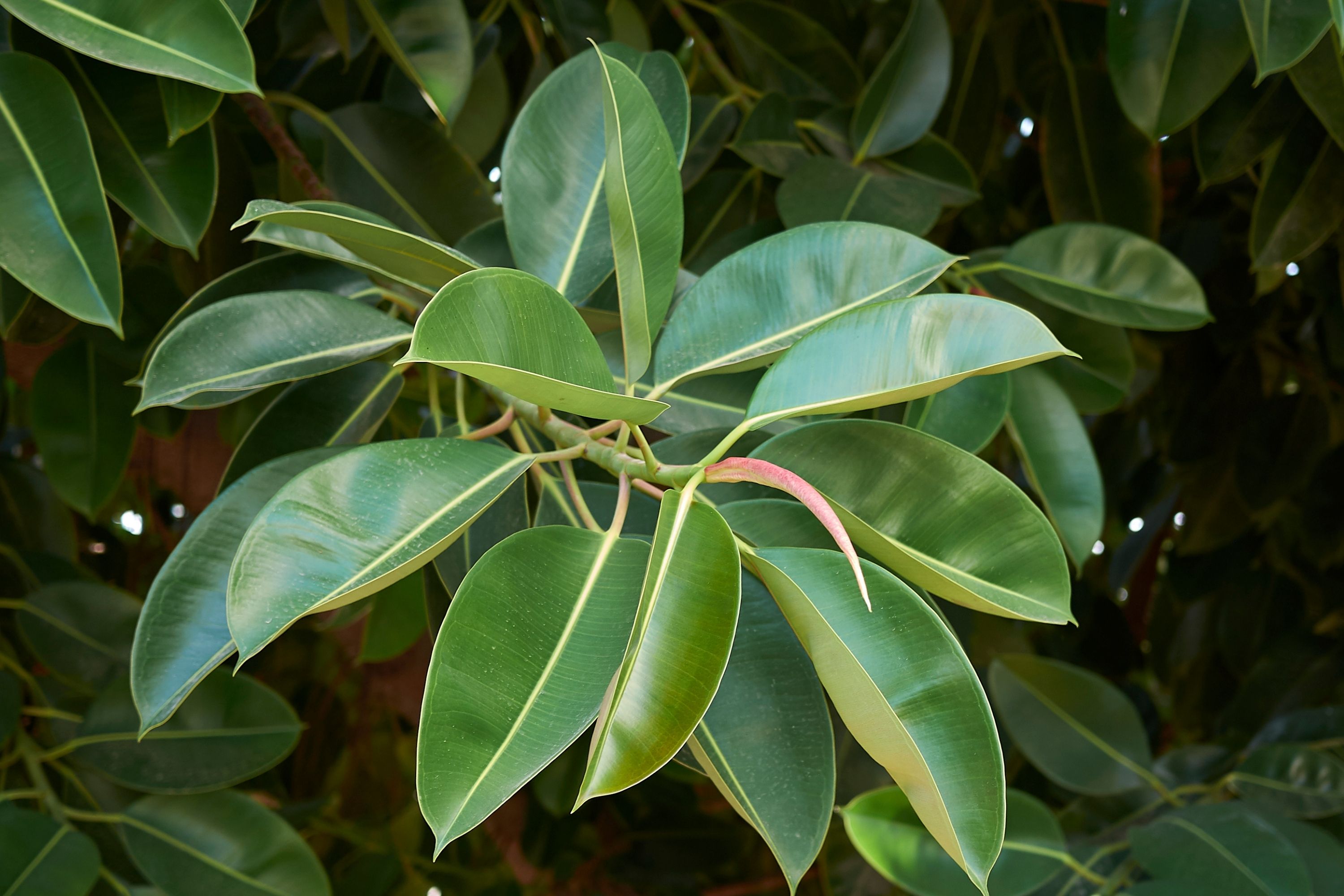Rubber tree
(Ficus elastica)

Description
Ficus elastica, commonly known as the rubber plant or rubber tree, is a popular ornamental plant that belongs to the family Moraceae. It is native to Southeast Asia and India and is known for its attractive glossy leaves and its ability to purify indoor air. In this article, we will explore the botanical features, habitat, cultivation, and care of Ficus elastica. Botanical Features: Ficus elastica is a large, evergreen tree that can grow up to 30 meters in height under favorable conditions. The leaves are thick, glossy, and oblong or elliptic in shape, measuring up to 30 centimeters long and 15 centimeters wide. The leaves are dark green in color and have prominent veins on the upper surface. The plant produces aerial roots, which can grow from the branches and penetrate the soil to anchor the tree. The flowers of Ficus elastica are small and inconspicuous and are borne inside a hollow receptacle called a syconium. The syconium is a unique structure that serves as both the receptacle for the flowers and the fruit. The fruit is a small, round, fleshy structure that is filled with numerous tiny seeds. Habitat: Ficus elastica is native to tropical rainforests in Southeast Asia and India. It grows naturally in a range of habitats, from lowland forests to montane forests at elevations up to 1,500 meters. In its native range, the rubber plant can grow to immense sizes and is an important timber tree. Cultivation: Ficus elastica is a popular houseplant due to its attractive foliage and ease of care. It is best grown in bright, indirect light and prefers temperatures between 16 and 29 degrees Celsius. The plant can tolerate some direct sunlight, but too much can scorch the leaves. It is also important to keep the soil evenly moist but not waterlogged, as the plant can be prone to root rot if overwatered. Ficus elastica can be propagated through stem cuttings or by air layering. Stem cuttings should be taken from a healthy plant and rooted in a well-draining potting mix. Air layering involves making a cut in a branch and then wrapping the cut with moist sphagnum moss to encourage roots to form. Care: Ficus elastica is a low-maintenance plant, but there are some things to keep in mind when caring for it. Here are some tips: Watering: Water the plant when the top inch of soil is dry to the touch. Be sure to drain any excess water from the saucer to prevent the plant from sitting in water. Fertilizing: Fertilize the plant during the growing season (spring and summer) with a balanced fertilizer. Do not fertilize during the winter months. Pruning: Prune the plant to control its size or shape. Ficus elastica can become quite tall, so regular pruning can help keep it manageable. Repotting: Repot the plant every 2-3 years to provide fresh soil and room for growth. Benefits: Ficus elastica is known for its air-purifying properties. It is particularly effective at removing formaldehyde from the air, which is commonly found in household products like furniture, flooring, and cleaning products. The plant also adds moisture to the air, which can be beneficial in dry indoor environments. Conclusion: Ficus elastica is a beautiful and easy-to-care-for plant that is perfect for indoor spaces. Its attractive foliage and air-purifying properties make it a popular choice for homeowners and offices. With proper care, Ficus elastica can thrive and provide years of enjoyment for its owner.
Taxonomic tree:







